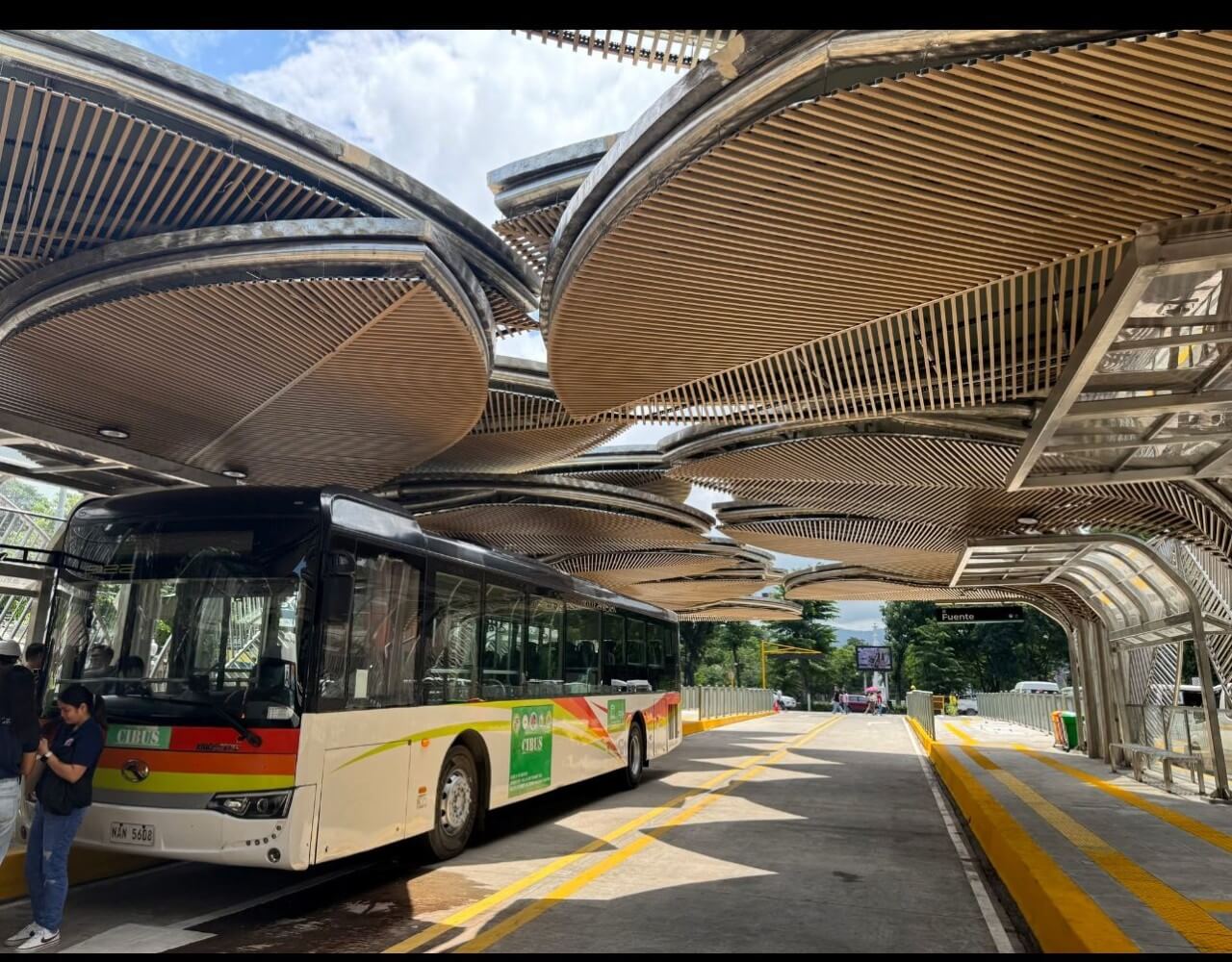

Transportation Secretary Vince Dizon announced at a press briefing in Cebu on Wednesday, July 23, that a test run for Phase 1 of the CBRT will begin in September, covering three stations along a 13-kilometer stretch from South Coastal Road in the south to Cebu I.T. Park in Barangay Lahug in the north.
“This is a major milestone,” Dizon said. “After 13 long years of waiting, the people of Cebu province and Cebu City will finally experience the BRT system—at least its first phase.”
Pilot run approved after meeting with Cebu officials
The decision to have a pilot run was reached following his meeting with Cebu Gov. Pamela Baricuatro, Nestor Archival and Vice Mayor Tomas Osmeña of Cebu City on Wednesday.
Dizon heeded Osmeña’s suggestion to proceed with the pilot run while awaiting a decision on the design and location of the station near the Capitol.
The Department of Transportation (DOTr) has yet to decide whether fares during the pilot run will be free or partially subsidized, as proposed by the three local officials.
“We will try our best to really bring down (the fare) or in fact, (make it) free first while we are testing (the CBRT system) starting this September,” he said.
During the test run, the Cebu Interim Bus Service (CiBus)—introduced in 2020 as a precursor to the BRT system—will be tapped to provide and operate the buses, as it already services the same route.
Dizon, however, clarified that CiBus would only serve as an interim operator. Once the DOTr begins the bidding process for the full BRT system, operations will be opened to other bus companies.
Phase 1 now 95% complete
By that time, the CBRT is expected to operate under a Public-Private Partnership (PPP), especially with the $141-million World Bank loan package set to expire in September 2026.
As of now, Phase 1 of the CBRT project is 95 percent complete. Phases 2 and 3, however, will take longer to finish, Dizon admitted.
He assured the public, though, that Phases 2A and 3A will be completed before the end of President Marcos Jr.'s term.
Dizon said the PPP operator must also be on board before the end of President Marcos Jr.’s term to ensure the project’s full implementation.
Patterned after Curitiba’s BRT system
“I think PPP is the way to go. We need to ensure that the system is operated properly. The best way to ensure that is to involve the private sector in Cebu. There are many private sector groups in Cebu that will be interested in this project,” said Dizon.
He said that under the PPP arrangement, the CBRT would follow the BRT model of Curitiba City, Brazil—an idea raised by Osmeña, who first lobbied for a bus-based transit system in Cebu in the 1990s.
According to Osmeña, the Curitiba BRT system impressed him because it was integrated into the city’s urban planning and encouraged population dispersal.
He pointed out that under this system, the fare remains the same—whether the passenger was traveling within the city or going to nearby towns.
“The fare is uniform. You can change buses without paying an additional fare,” he added.
A world-class BRT system in the making
He explained that the model is ideal for a public-private partnership (PPP) setup, as fare collection is handled by the government, while the operation and maintenance of buses are managed by the private sector. The buses, he added, are changed every three years and have the same specifications.
“That is the model that we will follow once we eventually bid this out as a PPP,” said Dizon. “That is exactly what we will do in Cebu. The Cebu system will really be a system that will be comparable to the best BRT systems in the world.”
He agreed with Osmeña that the buses should have uniform specifications, citing the EDSA Busway case where some buses have doors that open on the left, while most open on the right.
Considered one of its kind in the country, the CBRT was one of the flagship projects of the administration.
Osmeña lobbied for the bus-based transit system in the 1990s when he was mayor but it was only in 2008 when the DOTr began formal planning.
It was approved in 2012 by the then National Economic and Development Authority (NEDA) based on the feasibility study prepared and commissioned by the World Bank in 2009.
Delays, snags, and political pushback
Under the original timetable, the CBRT was planned to begin partial operations in the fourth quarter of 2023 and achieve full operational status by the second quarter of 2025.
In 2014, the World Bank approved a $141-million loan package to finance the project — $116 million from the World Bank itself and $25 million from the Clean Technology Fund.
In 2018, the project hit a snag when then Transportation Secretary Arthur Tugade and Secretary Michael Dino of the Office of the President in the Visayas pushed for the cancellation of the project.
Private sector support revives project
Thanks to private sector support, the BRT project was eventually retained and incorporated into the Cebu Integrated Intermodal Transport System (CIITS), a DOTr proposal that includes other mass transit modes such as rail, among others.
In June 2024, then-Governor Gwen Garcia ordered the suspension of the construction of a BRT station near the Capitol, citing violations of heritage laws as the site fell within a designated heritage zone.
However, earlier this month, the Washington-based financial institution warned government officials about the slow progress of the project's implementation.

Contributor